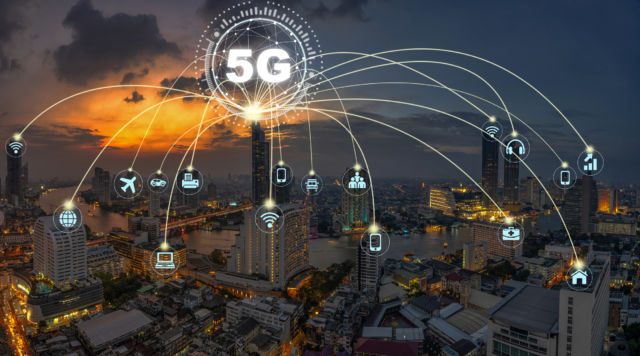
5G on the horizon: here’s what it is and what’s coming

The long-touted fifth generation of wireless communications is not magic. We’re sorry if unending hype over the world-changing possibilities of 5G has led you to expect otherwise. But the next generation in mobile broadband will still have to obey the current generation of the laws of physics that govern how far a signal can travel when sent in particular wavelengths of the radio spectrum and how much data it can carry.
For some of us, the results will yield the billions of bits per second in throughput that figure in many 5G sales pitches, going back to early specifications for this standard. For everybody else, 5G will more likely deliver a pleasant and appreciated upgrade rather than a bandwidth renaissance.
That doesn’t mean 5G won’t open up interesting possibilities in areas like home broadband and machine-to-machine connectivity. But in the form of wireless mobile device connectivity we know best, 5G marketing has been writing checks that actual 5G technology will have a lot of trouble cashing.
A feuding family of frequencies
The first thing to know about 5G is that it’s a family affair—and a sometimes-dysfunctional one.
Wireless carriers can deploy 5G over any of three different ranges of wireless frequencies, and one of them doesn’t work anything like today’s 4G frequencies. That’s also the one behind the most wild-eyed 5G forecasts.
Millimeter-wave 5G occupies bands much higher than any used for 4G LTE today—24 gigahertz and up, far above the 2.5 GHz frequency of Sprint, hitherto the highest-frequency band in use by the major US carriers.
At those frequencies, 5G can send data with fiber optic speeds and latency—1.2 Gbps of bandwidth and latency from 9 to 12 milliseconds, to cite figures from an early test by AT&T. But it can’t send them very far. That same 2018 demonstration involved a direct line of sight and only 900 feet of distance from the transmitter to the test site.
Those distance and line-of-sight hangups still persist, although the US carriers that have pioneered millimeter-wave 5G say they’re making progress in pushing them outward.
“Once you get enough density of cell sites, this is a very strong value proposition,” said Ashish Sharma, executive vice president for IoT and mobile solutions at the wireless-infrastructure firm Inseego. He pointed in particular to recent advances in solving longstanding issues with multipath reception, when signals bounce off buildings.
Reception inside those buildings, however, remains problematic. So does intervening foliage. That’s why fixed-wireless Internet providers using millimeter-wave technology like Starry have opted for externally placed antennas at customer sites. Verizon is also selling home broadband via 5G in a handful of cities.
Below millimeter-wave, wireless carriers can also serve up 5G on mid- and low-band frequencies that aren’t as fast or responsive but reach much farther. So far, 5G deployments outside the US have largely stuck to those slower, lower-frequency bands, although the industry expects millimeter-wave adoption overseas to accelerate in the next few years.
“5G is a little more spectrally efficient than 4G, but not dramatically so,” mailed Phil Kendall, director of the service provider group at Strategy Analytics. He added that these limits will be most profound on existing LTE spectrum turned over to 5G use: “You are not going to be able to suddenly give everyone 100Mbps by re-farming that spectrum to 5G.”
And even the American carriers preaching millimeter-wave 5G today also say they’ll rely on these lower bands to cover much of the States.
For example, T-Mobile and Verizon stated early this year that millimeter-wave won’t work outside of dense urban areas. And AT&T waited until it could launch low-band 5G in late November to start selling service to consumers at all; the low-resolution maps it posted then show that connectivity reaching into suburbs.
Sprint, meanwhile, elected to launch its 5G service on the same 2.5GHz frequencies as its LTE, with coverage that is far less diffuse than millimeter-wave 5G. Kendall suggested that this mid-band spectrum will offer a better compromise between speed and coverage: “Not the 1Gbps millimeter-wave experience but certainly something sustainable well in excess of 100Mbps.”
The Federal Communications Commission is working to make more mid-band spectrum available, but that won’t be lighting up any US smartphones for some time.
(Disclosure: I’ve done a lot of writing for Yahoo Finance, a news site Verizon owns.)





